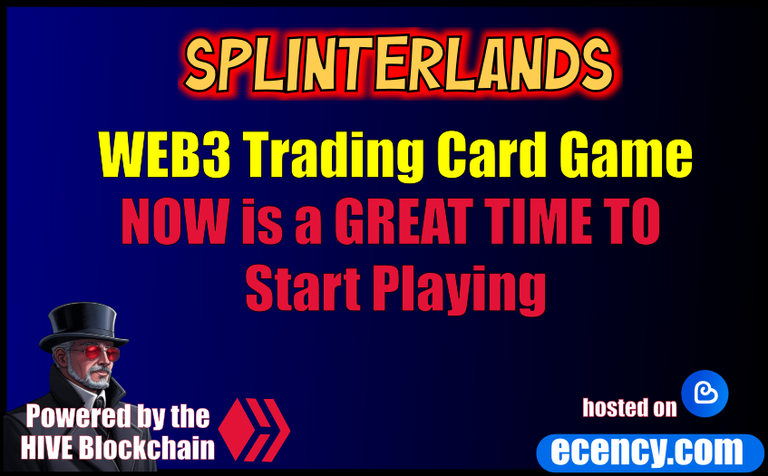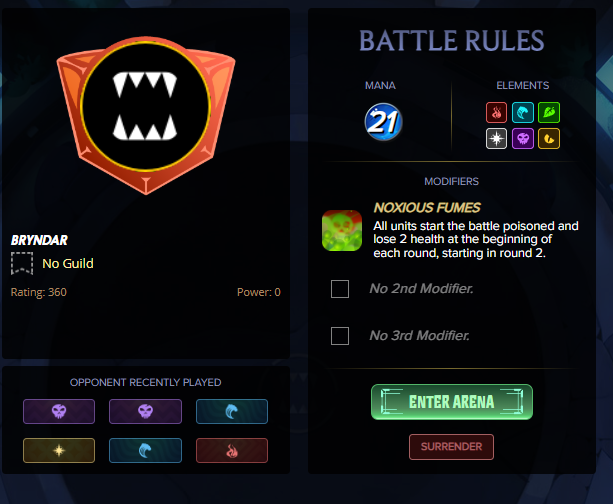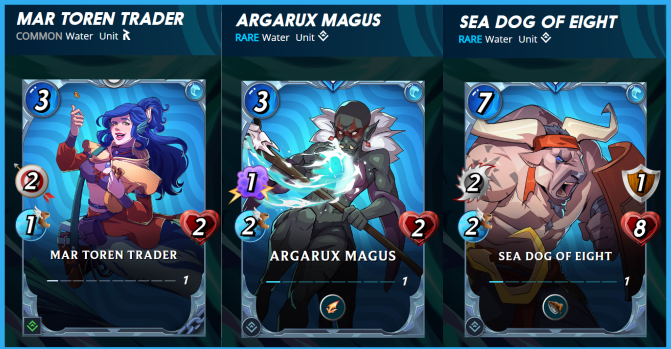Splinterlands - Now is a Great Time to Start Playing
Splinterlands is a trading card game on the Hive Blockchain. I never played Magic the Gathering or other trading card games, so I hadn't looked closely at Splinterlands until recently. I was all in on for Game Fi on the Avalanche Chain back in 2021. The cost of entry for many of the popular projects could run into the $100s, with much more to be competitive. Worse most of the games, weren't all that fun or even strictly speaking games at all. My previous experiences made me wary of blockchain games. I was aware of Splinterlands but didn't check it out because I thought it might be overly complex or expensive to get started playing.
I was wrong!
I've started playing recently and it was surprising easy to get started, didn't cost much, and it's been a lot of fun. Not counting the Splintershards $SPS and Dark Energy Crystal $DEC tokens I've purchased to stake or for investment - I've spent slightly less than $20 so far. Some of that spending wasn't necessary but I wanted to go through the process of filtering through and purchasing or renting cards. For North Americans a player can get started for about the cost of one meal at McDonalds. The barrier to entry is very low.

Simplified Game Play Explanation.
A few caveats - Splinterlands has a linear then steeper level of difficulty. It's easy to get started and players can get by with a simple understanding, and as the game progresses, there are more factors to consider for obtaining and choosing cards for teams.
When a player click "Battle" they are matched with another player with a similar rating. Looking at thee image below you can see I currently have a rating of 480, and that places me in the Bronze II tier. Players I am faced off with have a similar rating and similar card power. If I win a match my rating goes up, and I lose it goes down. Each match I win generates a reward of a small quantity of $SPS tokens, and Glint. Glint can be exchanged for more cards, loot chests, and other perks.

Let's Get Random
When two players are matched for a battle a set of constraints is randomly generated. Lookin at the image below I can see the opponent I was matched with including their rating, and the teams they uses for their most recent matches.
Mana, Summoners and Elements
MANA - each card has a mana rating, for the game shown here the mana cap is 21, which means all of the mana values of the cards chosen for the match must have a mana sum of 21 or less. Cards also correspond to elements - fire, water, earth, life, death, dragon and neutral. Players first select a Summoner card which has an element - and can only summon Unit cards with the same element, or the neutral element. Dragon Summoners are slightly different they can summon dragon element unit cards, and one other element of the players choice.

Units - Melee, Ranged, Magic
During my learning phase I've primarily focused on just the water element cards, so all the units in the picture below are from the water set. Looking at the first card "MAR TOREN TRADER" it has a mana cost of 3, a ranged attack power of 2, a speed of one and a health of 2. Moving over to "ARGARUX MAGUS" - it has a mana cost of 2, a magic attack power of 2, a health of 2, and the ability to attack a randomly selected opponent. "SEA DOG OF EIGHT" has a mana cost of 7, a melee attack power of two, armor of 1, health of eight, and a special ability called corrosive ward. All of these are inexpensive cards, at the early stages I have assembled the "Dollar Store Heroes."

Learn More at the Splinterlands Site
The explanation in the post is rudimentary, but my intent was to give a brief overview. Splinterlands is easy to start with and fun to play. The documentation on the Splinterlands site is fantastic and easy to follow. It only costs $10 to start playing.
Delegate Tokens and HP to Fallen Angels to earn weekly rewards!
Delegate | Join to the guild